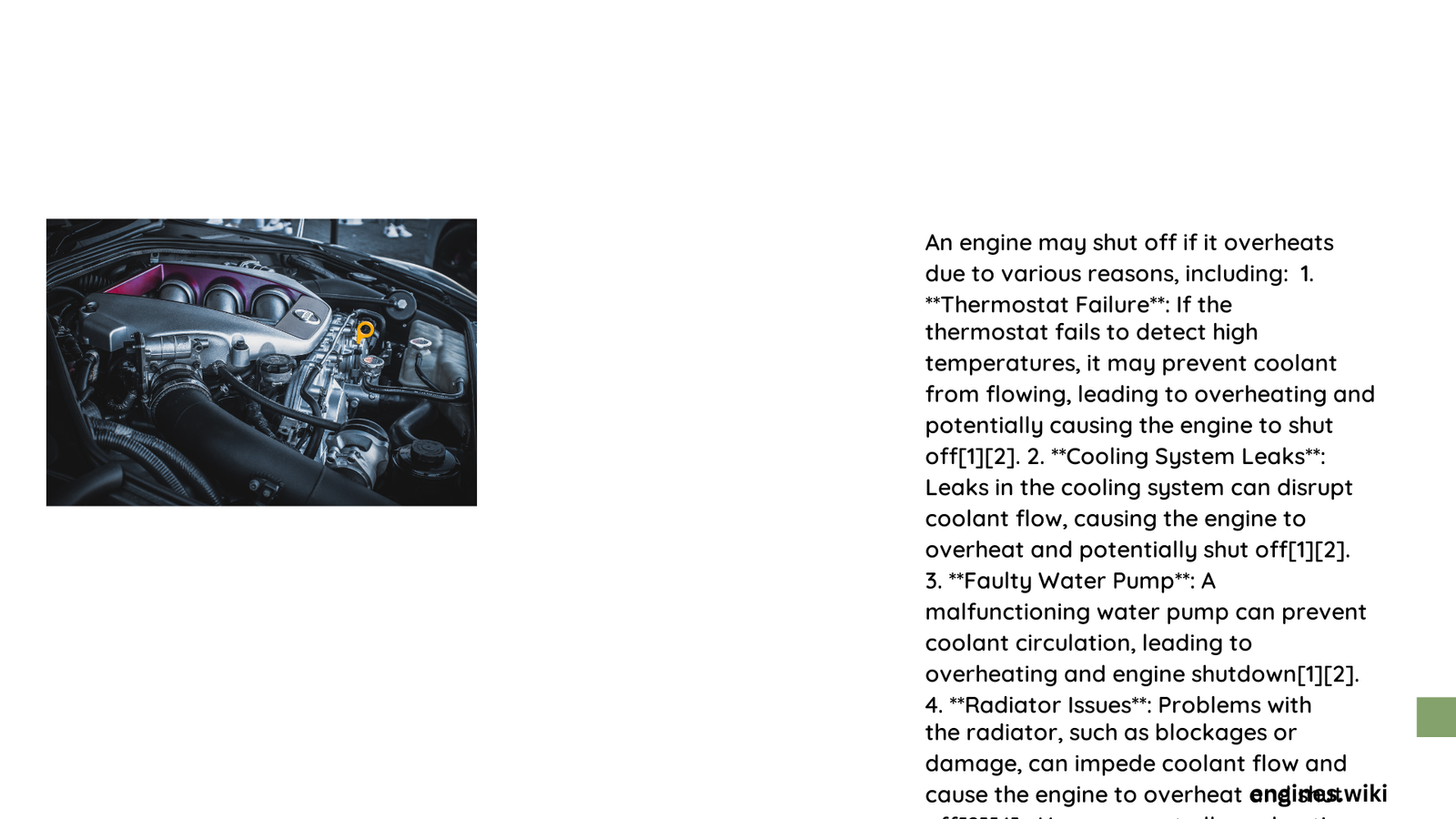Modern vehicles are engineered with sophisticated temperature monitoring systems designed to protect the engine from critical damage. When an engine reaches dangerously high temperatures, most contemporary vehicles will implement protective shutdown mechanisms to prevent permanent mechanical failure. This automatic protection helps preserve the engine’s structural integrity and prevents expensive repairs by interrupting operation when thermal stress becomes extreme.
What Triggers Engine Shutdown During Overheating?
Engine shutdown during overheating is not a universal, guaranteed response but depends on several critical factors:
How Do Temperature Sensors Detect Overheating?
- Primary Detection Mechanism: Electronic temperature sensors continuously monitor coolant temperature
- Threshold Ranges:
- Normal Operating Temperature: 190-220°F (88-104°C)
- Warning Zone: 230-250°F (110-121°C)
- Critical Shutdown Zone: Above 250°F (121°C)
Can Modern Vehicles Automatically Prevent Engine Damage?
Most contemporary vehicles are equipped with advanced engine management systems that can:
- Trigger dashboard warning lights
- Reduce engine performance
- Activate cooling system components
- Initiate emergency shutdown protocols
| Temperature Range | Vehicle Response | Potential Damage Risk |
|---|---|---|
| 190-220°F | Normal Operation | Minimal |
| 230-250°F | Warning Signals | Moderate |
| 250-300°F | Potential Shutdown | High |
| 300°F+ | Immediate Shutdown | Catastrophic |
What Causes Engine Overheating?

Several mechanical failures can precipitate dangerous temperature escalations:
- Coolant System Failures
- Radiator blockages
- Water pump malfunction
- Thermostat failure
- Coolant leaks
- Broken cooling fans
How Do Electronic Control Units Respond?
Modern Electronic Control Units (ECUs) utilize sophisticated algorithms to:
- Monitor real-time temperature data
- Compare readings against manufacturer-defined thresholds
- Implement progressive protective measures
- Execute emergency shutdown if critical temperatures persist
Preventative Maintenance Strategies
To minimize overheating risks:
- Regular coolant system inspections
- Maintain proper coolant levels
- Replace coolant according to manufacturer recommendations
- Check radiator and cooling system components
- Address warning signals immediately
What Are Potential Repair Costs?
Overheating-related repairs can range significantly:
– Minor repairs: $50-$300
– Major engine repairs: $1,000-$4,000
– Complete engine replacement: $4,000-$8,000
Technical Insights on Engine Shutdown
While not every vehicle will automatically shut down, most modern cars have integrated protection mechanisms. The specific shutdown protocol depends on:
- Vehicle make and model
- Age of the vehicle
- Complexity of engine management system
- Severity and duration of overheating
Recommended Immediate Actions
If your engine begins overheating:
– Pull over safely
– Turn off the engine
– Allow cooling for 15-30 minutes
– Check coolant levels
– Inspect for visible leaks
– Do not attempt to remove radiator cap when hot
Conclusion
Understanding your vehicle’s thermal management system is crucial for preventing expensive repairs. While automatic shutdown is not guaranteed, modern vehicles are designed with multiple layers of thermal protection.
Reference:
– SAE International Thermal Management Standards
– National Highway Traffic Safety Administration
– Society of Automotive Engineers
